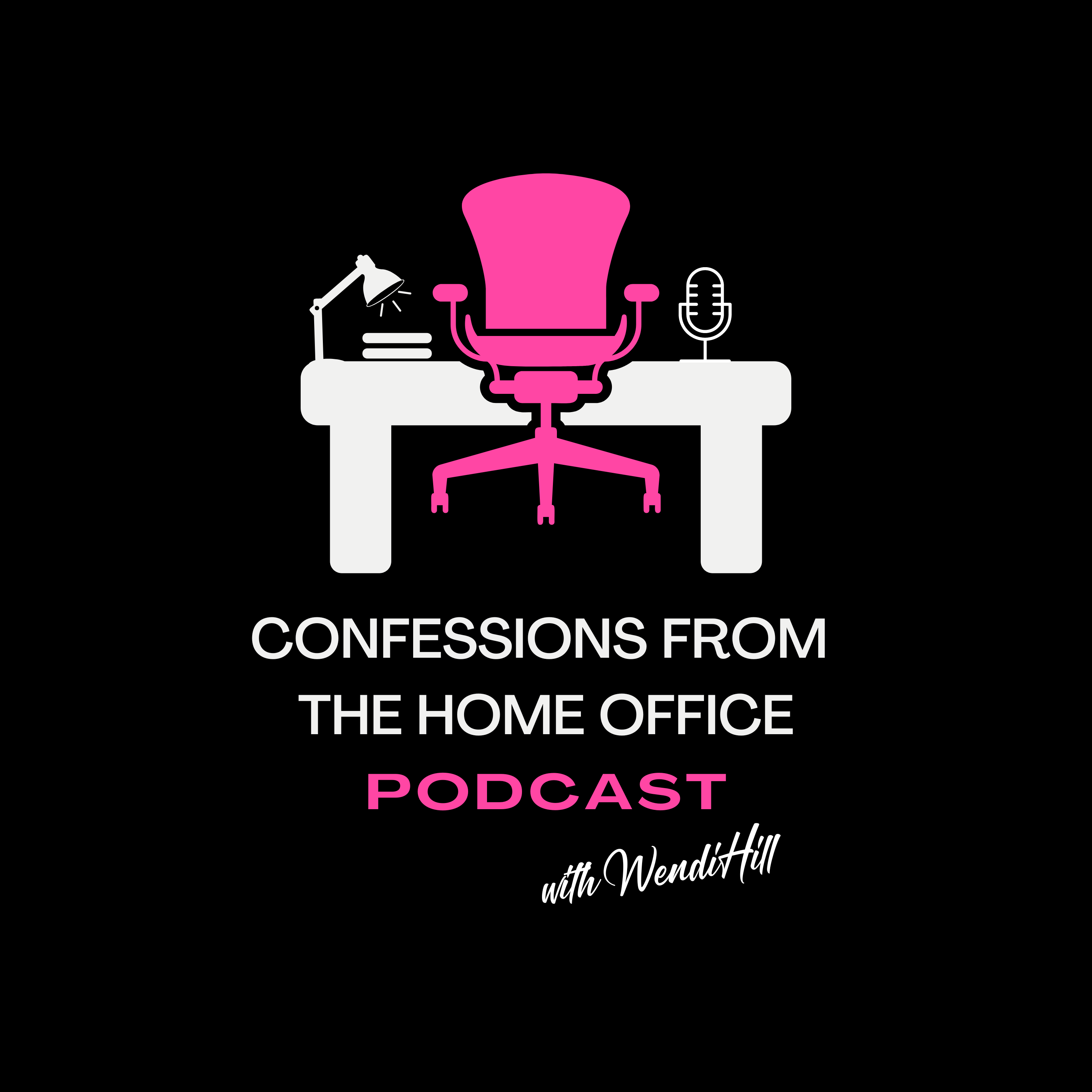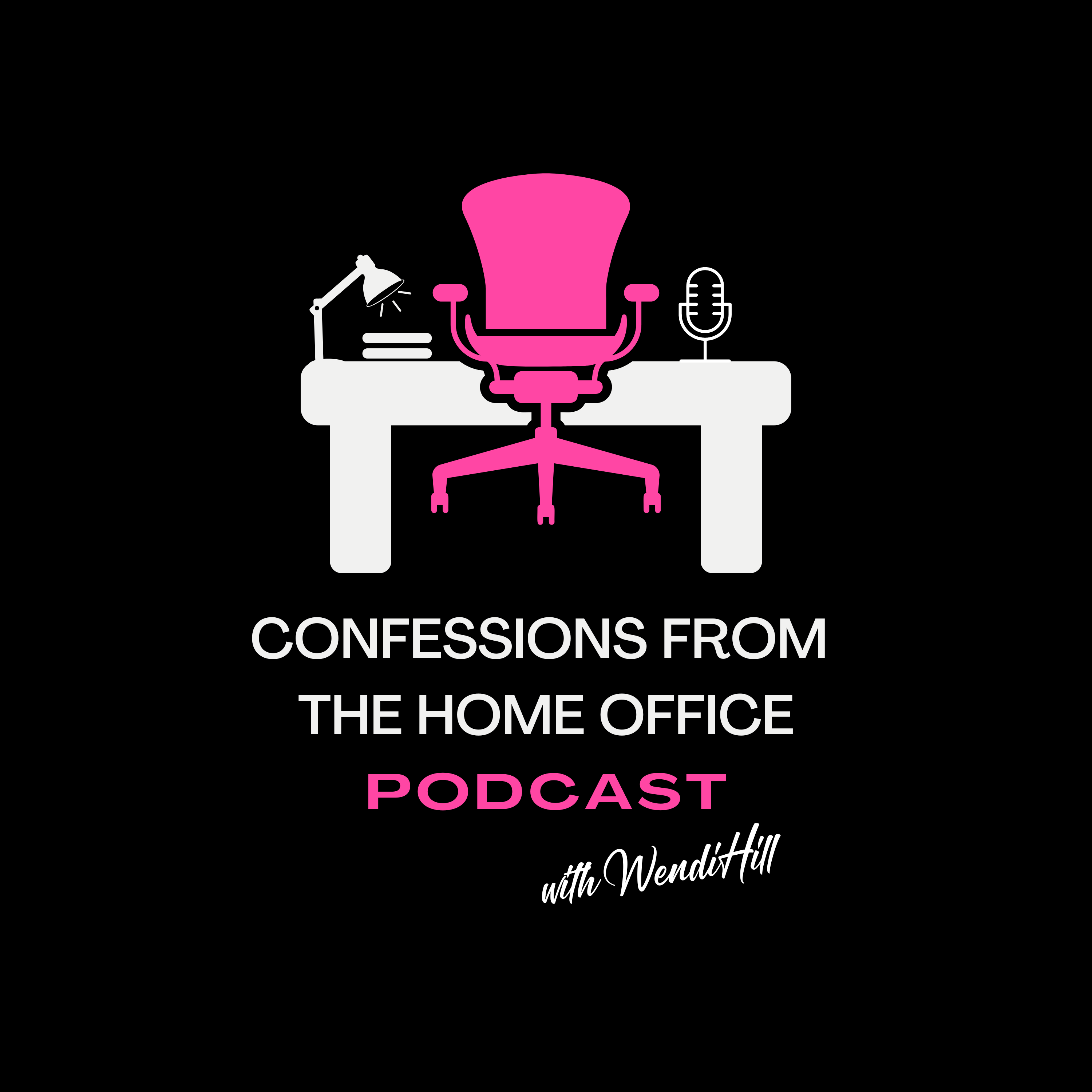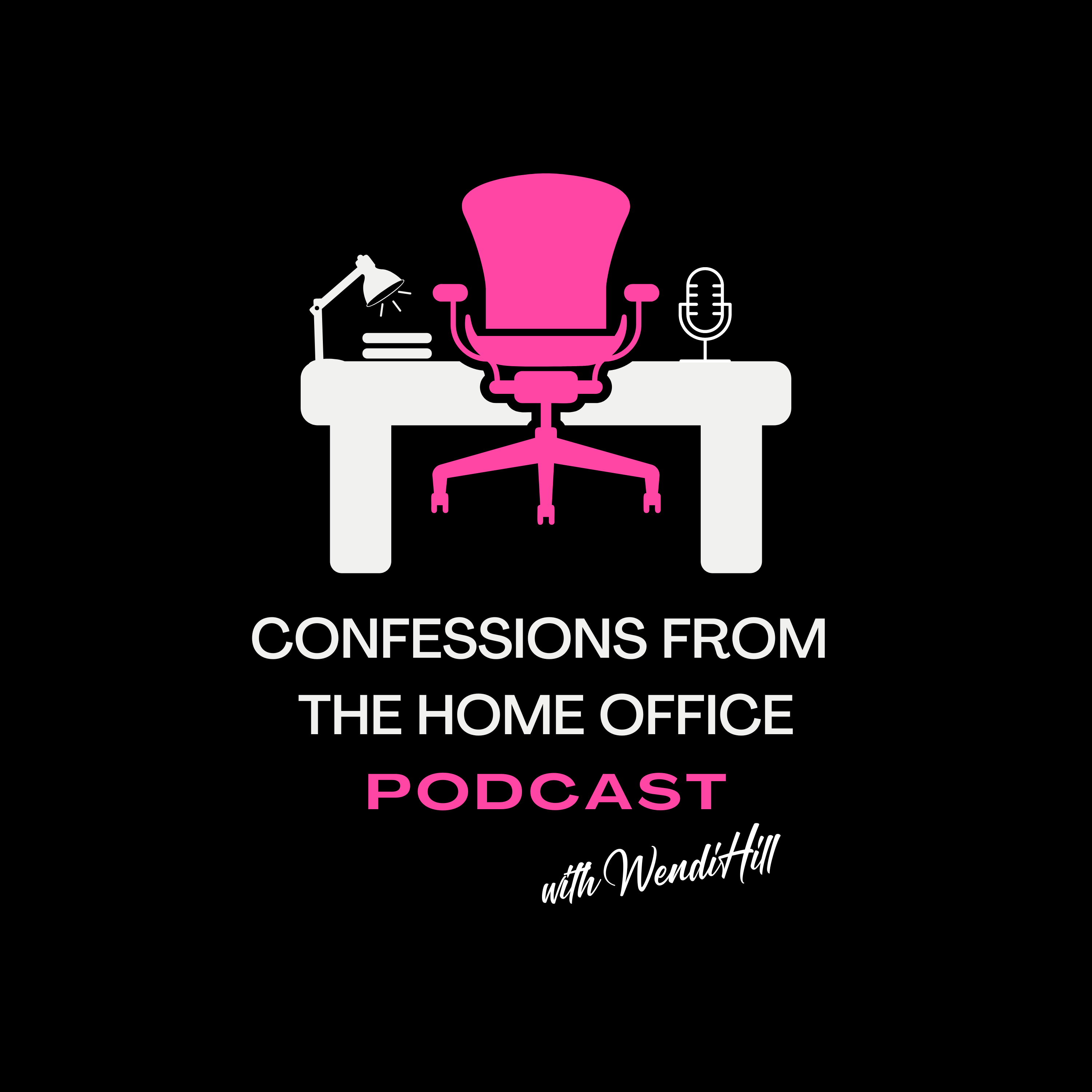Episode Transcript
[00:00:00] Foreign.
[00:00:07] Welcome back to the Confessions in the Home Office podcast. I'm Wendy Hill, and today we're tackling one of the biggest mistakes I see business owners make.
[00:00:16] That's confusing random marketing tactics with an actual marketing strategy.
[00:00:21] So it's really tempting. You see someone doing TikToks, and you say, we should be doing TikToks.
[00:00:27] You hear that A competitor started a podcast. You think, okay, I'm going to grab a microphone, and I'm going to do that, too.
[00:00:35] So you boost a Facebook post here and there, you send an email once in a while, and before you know it, you're tired. You spend a bunch of money, and you really don't know if anything is working.
[00:00:48] I know that because I've been there, too, the early days of my business. And I really thought the more that I did, the better my results would be. It would just be, you know, work harder, the whole hustle, More I need to post. More clients will just show up. And they didn't. All I got was burnout, spending extra money on ads, and just frustrated.
[00:01:12] So today I'm answering five questions that'll help you understand the difference between strategy and just doing random things.
[00:01:19] By the end of this episode, you'll know what a real marketing strategy looks like, where to start, and how you really should measure success. So let's get started.
[00:01:28] Question number one. Do I really need a marketing plan, or can I just post on social media? Isn't that what everybody else is doing?
[00:01:36] So here's the truth. You can post on social media without a plan, but it's kind of like, as my friend Jay says, firing bottle rockets. Or you could say, throwing spaghetti at the wall and hoping something sticks. Sometimes it works and sometimes it doesn't.
[00:01:52] So a marketing plan is about intention. It says, here's who I want to reach. Here's where they spend their time. Here's the message that I need to get across to them. And without that, you're just kind of guessing. And, you know, we're really not mind readers. We think we are after we have a lot of experience, but we're not.
[00:02:11] So I'll give you an example. I once had a client who was posted on Facebook every single day. Their posts were funny memes, holiday greetings.
[00:02:19] Today is National Taco Day.
[00:02:22] And a random photo of their dog in the car.
[00:02:25] But none of it tied back to what they actually did as a business.
[00:02:29] They were exhausted and their audience was confused, and they were doing this on their business page. They weren't doing this on their personal page.
[00:02:36] And and so I recommended that we sit down and just talk through a simple plan. We don't need a big deck, we don't need a big document, just kind of a one page outline to keep them on track. And everything shifted. Instead of just posting on their business page just because it's Tuesday or because they do that every day at lunch, we focused on what they wanted to sell, who they wanted to reach, and what questions their customers had and tried to address those. Think about when every time you have a meeting, every time you have a call, every time you work with someone, what are the things that they're asking? Capture those. And so guess what? Engagement actually went down a little bit, which I know drives some people crazy, but inquiries about their services and sales went up.
[00:03:19] So here's a quick framework if you want to look at a really simple plan. Set one goal, decide who you're talking to, and then decide what you want them to do next.
[00:03:31] And that's it. A plan doesn't have to be complicated, but without a plan, you're just staying busy without moving forward. And over time, everybody just wears down.
[00:03:42] So question number two. How do I figure out who my target audience actually is?
[00:03:47] So this is where people get stuck.
[00:03:50] Your target audience is not everyone who needs what I sell. That's too broad. And honestly it waters down your message. And you couldn't serve all of those people, especially if you're a small, medium business.
[00:04:01] So here's where to start. Think about, let's take like your three to five best clients.
[00:04:06] These are the ones who paid your price without much grumbling or without any grumbling. They appreciate your work, they've referred you to others.
[00:04:15] Write down what they have in common and that's the start of your target target audience.
[00:04:21] I've had a client say before, anybody with a credit card is my client.
[00:04:25] But then when you start looking through things, their best clients were service based but service based businesses.
[00:04:32] And then when you narrow down the focus and speak directly to that group, then you start, then they start getting more traction. They weren't just chasing everyone, they were connecting with the right people.
[00:04:45] So in my own business, I don't say I do marketing for everyone and anyone that used to attach, attract people who didn't value the work and wanted the cheapest option and went away quickly because they weren't in it for the long haul. Now I say I work mainly with professional services firms.
[00:05:04] I work with one E Commerce at a time and I work with one nonprofit at a time.
[00:05:09] It's clear and right people. And the right people recognize if they're in that description or not.
[00:05:16] So ask yourself, who's your best client? Where do they spend the time? What do they need most?
[00:05:22] And the clearer that you become, the stronger that your marketing will be.
[00:05:27] So question number three. How do I know which platforms to use?
[00:05:31] Should I be on Instagram? Should I be on TikTok? Should I be on LinkedIn? Should I be on YouTube? Should I be on all of them?
[00:05:37] You don't have to be everywhere.
[00:05:39] In fact, trying to be everywhere is kind of the fastest way to burn out. I mean, when you think, I gotta post a six to different platforms today, I mean, that can be exhausting if it's not something you're used to.
[00:05:51] So I want you to figure out where your audience spends most of their time. If they're professionals, I would say that LinkedIn is a smart place that you should start.
[00:06:01] If you're in retail or lifestyle, Instagram could be the sweet spot.
[00:06:06] If you're trying to reach Gen Z, I would look at TikTok. That may be where you need to show up.
[00:06:13] I've had a client before tell me they need to be on all the platforms because that is what everyone else is doing.
[00:06:19] And it was exhausting. No one platform was really strong because they were just stretched too thin.
[00:06:24] So I advised them to scale back and we just focused on LinkedIn and we focused on a newsletter.
[00:06:31] And the results better than ever.
[00:06:34] They were consistent, they were clear and showing up where their clients actually were.
[00:06:38] So pick one or two platforms. A lot of people say one, but even in my case I need to be on at least two and commit to them and do them well and just forget the rest for right now. Just because threads is out, you don't have to be on threads unless you find out that's where your target audience is.
[00:06:54] But just, it'll still be there. You don't, you don't need to be on it right now. You can get there. And consistency, like I always say, beats being scattered every time.
[00:07:05] So question number four, how do I measure if my marketing is working?
[00:07:08] And this is where most business owners get stuck. They look at likes and comments and shares and they say, we don't have enough people commenting, we don't have enough people liking. And yeah, all those metrics, those are nice, but those are feel good metrics. They make you feel like something's happening, but they don't really connect to revenue. And I want you to think more of money metrics.
[00:07:30] Am I getting more leads? Am I getting more sales calls or consultations.
[00:07:35] Are people signing up for my email list?
[00:07:37] Is revenue starting to increase?
[00:07:41] So I've had a client before that was just obsessed with likes, but they. But it didn't. Their social media wasn't bringing in a new lead.
[00:07:50] And then there was another post that barely got any likes, but two people reached out and booked services.
[00:07:58] That's real roi. And I'll tell you this. I mean, especially I would say, like on LinkedIn, I don't always go and like every post that I read, if it's somebody I know or something I really agree with. But a lot of times I'll see something and I just keep scrolling because I'm busy. And I think that's what a lot of people are doing now. They're absorbing the information. They may not be reacting to it.
[00:08:21] But I had a client call me, I would say, probably two years ago, and they said, I've been watching Your post on LinkedIn for about three years now and I'm ready to start working with you. They had never liked anything, they had never shared anything, they had never commented on anything. So here's a tip. You should track both, but don't confuse the two. Engagement can be really encouraging, but the real question is, does this effort move people closer to becoming a client or a customer?
[00:08:53] And then here's the fifth question. What's the first step? If I've never really had a marketing strategy before, I would say this is probably my favorite question, because when someone says that, that usually means they're ready to go past random and become intentional with what they're doing. So here's where I would start. I would set a simple goal.
[00:09:13] Maybe it's a certain number of new leads a month, or several new clients a quarter. But write it down. Don't just have it in your head where it can bounce around and change as you forget what is. Write it down somewhere. Put it as a note in your phone. I want you to define your audience. I want you to be really specific about who you want to reach.
[00:09:32] And if you feel like it's too broad and there's a lot of people you want to reach, narrow down even more. You can. You can keep doing that.
[00:09:39] I want you to choose one or two activities that make sense. Maybe it's a weekly LinkedIn post, or maybe two posts a week. Maybe it's a monthly email that goes out, or maybe it's a blog.
[00:09:50] Maybe it's Instagram two or three times a week. But just keep it manageable. It doesn't have to be everything to everybody.
[00:09:57] And then I want you to track your results. Still. This can be a note in your phone or for a notebook person. You can write that down and just, just keep some notes for a while. This doesn't have to be some big spreadsheet.
[00:10:09] So let's talk about our retail business.
[00:10:15] And I'm just going to use retail because it's simple. I don't work with many retails retailers, but let's think about like a bakery. My kids and I were talking about someone who started a small bakery this weekend.
[00:10:28] So let's say their goal is to sell more custom cakes per month. They want to sell 50 more.
[00:10:37] And so they would think, well, who's the audience? Well, it's mainly moms planning birthdays in the local community, their cakes for their kids or cake for their spouse or for their parents.
[00:10:47] So what would you do?
[00:10:49] I'd post two to three photos of cakes a week on Instagram and I would send a monthly email with specials and if they had time, maybe two emails a month, show some samples, provide an offer and then tracking. Think about how many inquiries you received off the LinkedIn or DMs you've gotten through Instagram.
[00:11:14] And that's it for right now. See, it's pretty simple. So you don't need a huge binder of strategy. You don't need to let it weigh all over you where you're losing sleep at night. Just a goal, an audience, a couple of activities and a way to measure the results.
[00:11:32] So let's just recap the big takeaways from today.
[00:11:35] Random posting is not a strategy.
[00:11:38] Knowing your audience is very important.
[00:11:41] You don't have to be everywhere, just where your people are and track results that matter, not just likes.
[00:11:48] And start simple, with a clear goal, an audience, a clearly defined audience, a couple of consistent activities, and a way to measure progress.
[00:11:59] So if you've been feeling like your marketing is all over the place, this is your reminder. You don't need to do more, you just need to be more intentional with it.
[00:12:08] And if you're ready to start, stop guessing and start building real marketing systems. I would love if you checked out my Accelerate program. It's a 60 day intensive where we set your goals, build your strategy, create the content and the systems together and you don't have to do it by yourself.
[00:12:25] So thanks for joining me on this episode of Confessions from the Home Office. That's it for this week and I want you to remember, strategy first and then tactics second. And I'll see you next week.


